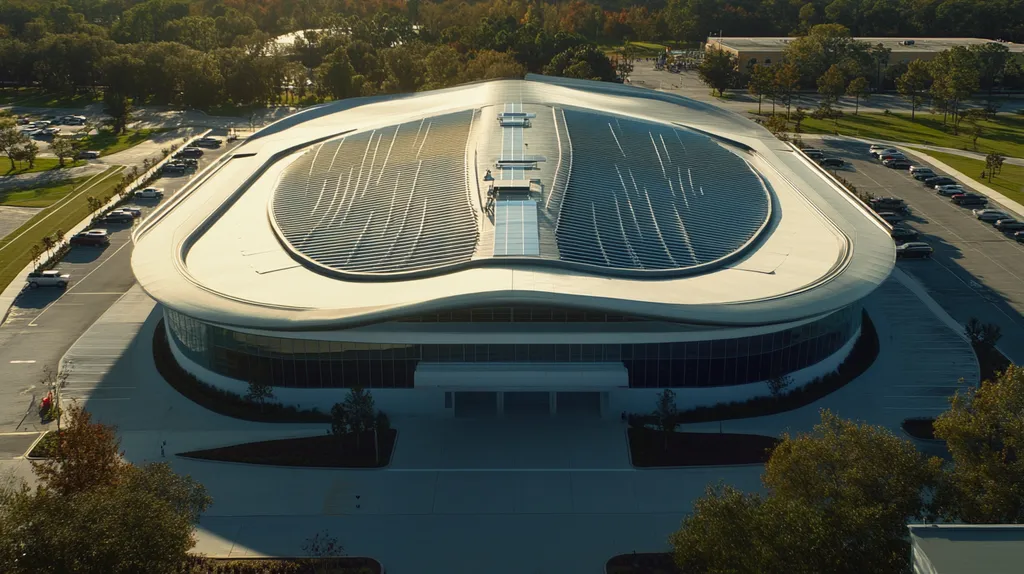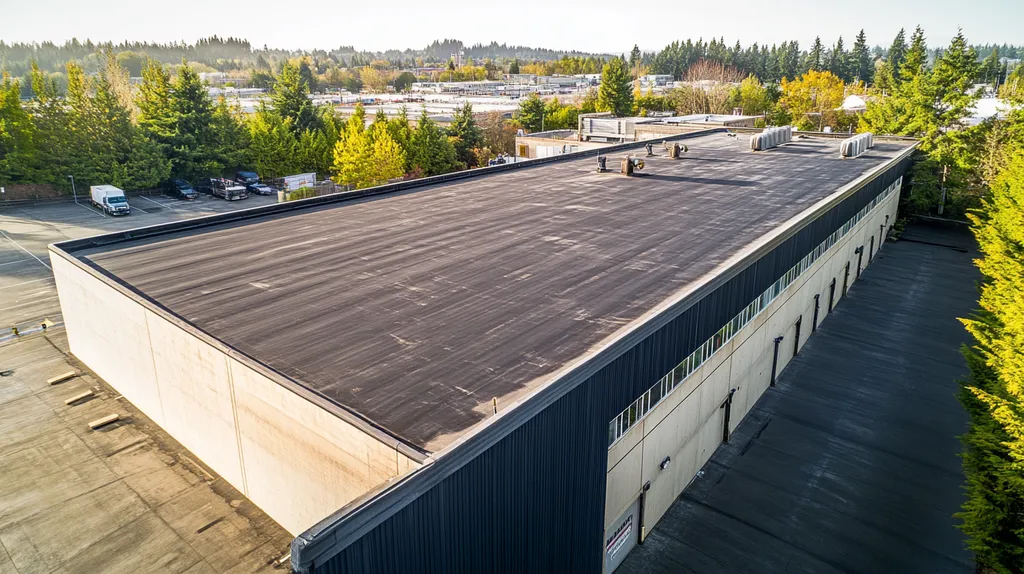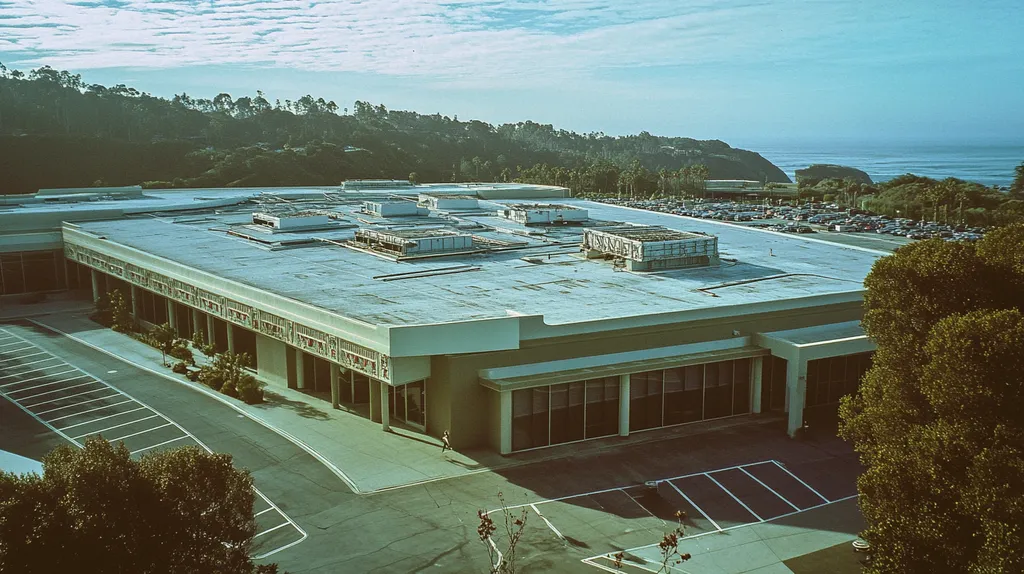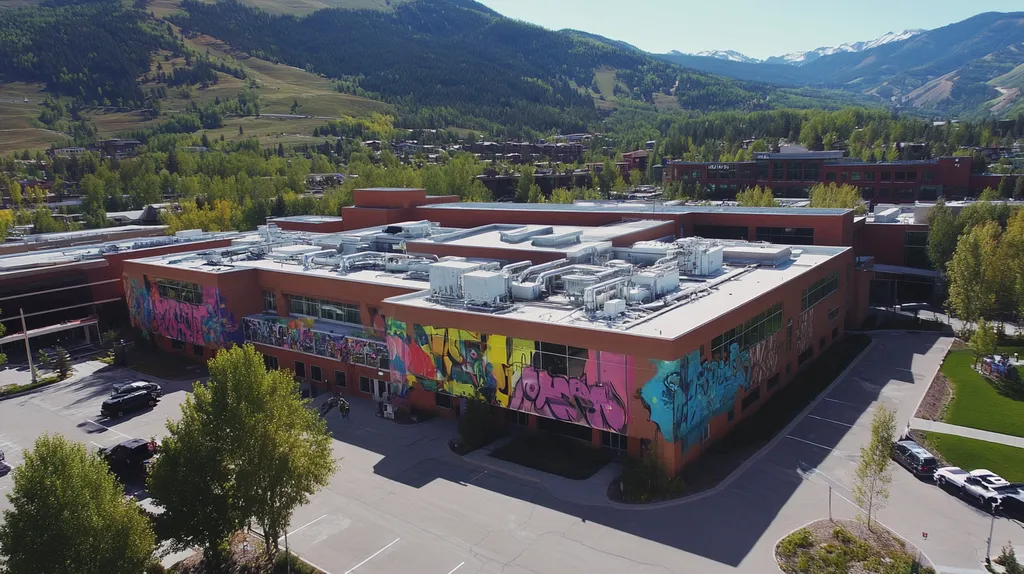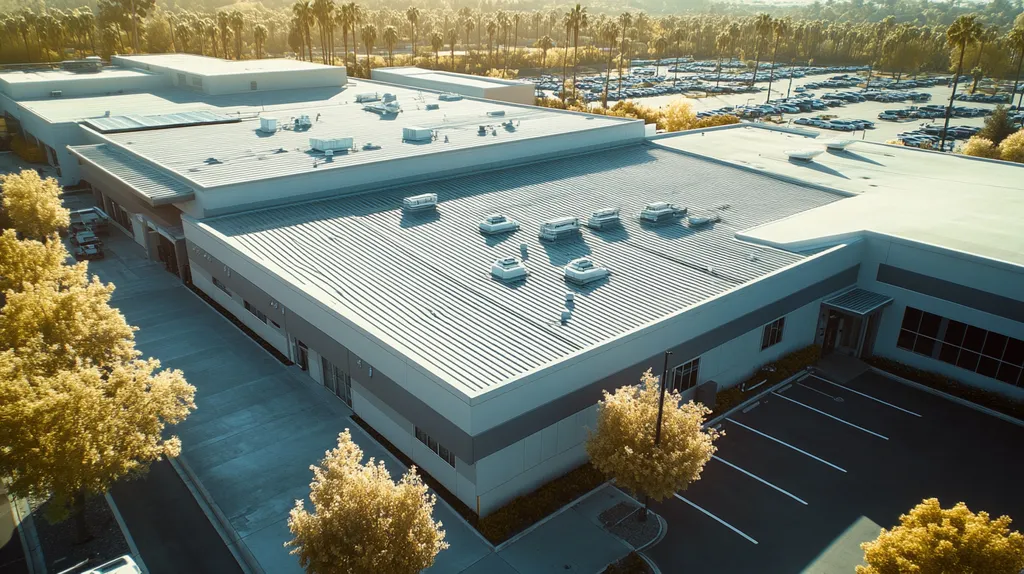Over 70% of commercial roof coating failures stem from inadequate surface preparation, leading to millions in preventable repair costs annually. Proper cleaning before coating application isn’t just maintenance – it’s a critical investment in roof longevity and building protection.
For facility managers, understanding proper cleaning procedures can mean the difference between a coating that lasts 15+ years and one that fails within months. This comprehensive guide examines the critical factors in roof cleaning, from performance metrics to compliance requirements.
Whether managing a single facility or overseeing multiple properties, these actionable solutions will help optimize coating adhesion, extend roof life, and maximize return on investment.
SECTION 1: PERFORMANCE FACTORS
Cleaning commercial roofs before applying coatings isn’t merely a wise choice; it’s essential for optimal performance. According to the National Roofing Contractors Association, nearly 70% of coating failures occur due to inadequate surface preparation. When roofs aren’t thoroughly cleaned, contaminants can weaken adhesion, risking long-term function and resulting in expensive repairs and decreased energy efficiency. Facility managers must recognize the importance of proper preparation to ensure durable roofing solutions.
Roof Surface Preparation
Starting with effective roof surface preparation is crucial for successful coating application. Contaminants such as dirt, grease, and debris act like a shield, preventing adhesives from sticking properly. It’s vital for facility managers to implement comprehensive cleaning techniques, which include pressure washing and ensuring the removal of any old coatings or debris.
The specific type of roof surface often dictates the preferred cleaning approach. For instance, TPO and PVC membranes need careful handling during cleaning to avoid damage. Choosing the right tools and methods can enhance the surface texture, which boosts bonding strength significantly.
A pristine surface not only aids adhesion but also prolongs the coating’s lifespan. Ignoring surface preparation can lead to wasted resources and unexpected maintenance costs down the line. Establishing regular maintenance schedules that incorporate cleaning protocols is essential, helping to monitor the roof’s condition and take action before deterioration occurs.
Key Action Items
Coating Adhesion and Durability
The durability of roof coatings heavily depends on their adhesion, which is significantly influenced by how clean the surface is. A well-cleansed surface guarantees that coatings can bond effectively, forming a protective barrier against harmful UV rays and environmental elements. Inadequate adhesion leads to premature wear and tear, requiring costly reapplications.
Every coating system comes with specific requirements for preparation and cleaning to ensure maximum adhesion. For example, silicone coatings are best applied to clean surfaces; dirt or oils can compromise their effectiveness. Facility managers need to adhere closely to manufacturer guidelines for surface preparation to avoid issues.
Investing in proper cleaning procedures can result in substantial long-term savings by enhancing the longevity of coatings. Facilities that regularly clean their roofs may discover coatings lasting up to twice as long compared to those that do not follow through with cleaning. Coatings with superior adhesion can also enhance overall roof performance, reducing leaks and improving energy efficiency.
Key Action Items
Energy Efficiency and UV Resistance
Energy efficiency is a key focus for facility managers, particularly when it comes to roofing systems. Clean roofs reflect more sunlight and absorb less heat, resulting in notable reductions in cooling costs. A clean surface optimizes reflective properties of the coatings, helping to maintain comfortable indoor temperatures.
Moreover, UV resistance is closely linked to roof cleanliness. Contaminants can impair a coating’s ability to withstand UV damage, leading to shorter lifespans and increased energy costs. Regular cleaning is a proactive measure that substantially reduces this risk.
The benefits of energy efficiency extend beyond just savings; buildings with superior energy performance tend to receive higher property values and boost tenant satisfaction. Facility managers should prioritize roof cleaning and preparation to meet modern energy efficiency standards.
Key Action Items
SECTION 2: FINANCIAL CONSIDERATIONS
Cleaning commercial roofs is not just an operational task; it’s a financial imperative. A roof left unclean can deteriorate more quickly, leading to increased maintenance costs and potentially severe water damage inside the building. According to the National Roofing Contractors Association, more than 75% of roofing failures result from poor maintenance, highlighting the critical need for effective cleaning practices. This section will delve into the costs associated with cleaning and coating, the long-term savings stemming from diligent maintenance, and strategies for effectively budgeting these essential tasks.
Cost of Cleaning and Coating
The upfront cost of cleaning a commercial roof can vary widely based on the roofing material and its size. Typically, property managers should expect to spend between $0.20 and $0.75 per square foot for cleaning services. Additionally, the cost of roof coatings can range from $0.50 to $2.00 per square foot. While these figures may initially appear steep, they represent essential investments that significantly enhance roof durability and performance.
It’s important to note that neglecting to clean the roof prior to coating application can void warranties and lead to even larger unforeseen costs. Built-up dirt and debris can undermine the coating’s adhesive qualities, resulting in peeling and premature failures. Thus, viewing cleaning costs as a strategic investment rather than a wasteful expense is crucial.
When establishing a comparison between the initial costs for cleaning and coating versus roof repair or replacement expenses, the potential for savings becomes evident. Implementing proper cleaning and coating techniques not only ensures a longer-lasting roof but also prevents costlier fixes in the future, making it a smart financial choice for facility managers.
Long-Term Cost Savings
Investing in regular cleaning and high-quality coatings can translate into impressive long-term savings. A well-cared-for roof can last an additional 10 to 20 years, which delays the necessity for expensive replacements and ultimately reduces lifecycle costs.
Coatings applied to clean surfaces can improve energy efficiency by reflecting more sunlight, which helps decrease cooling costs. Research indicates that a cool roof can slash energy use for cooling by up to 15%. This means reduced utility bills and contributes to environmentally sustainable practices. Over time, the energy savings can outweigh the costs you originally spent on cleaning and coatings.
Moreover, adopting a proactive maintenance regimen minimizes the chance of needing emergency repairs, which typically come with high costs. Facility managers that prioritize routine cleaning advantage themselves by ensuring predictable budgeting and preventing any sudden financial stress.
Long-term savings go beyond immediate expenses; a well-maintained roof can boost property value and elevate tenant satisfaction, creating a positive impact on financial outcomes.
Budgeting for Maintenance
Establishing an effective budget for roof maintenance is a key component of managing commercial properties. Facility managers should consider allocating around 1-2% of the building’s value each year specifically for roof cleaning and maintenance. This forward-thinking approach ensures funds are available for routine cleanings and immediate needs that may arise.
Having a dedicated maintenance budget protects property owners from unexpected financial burdens tied to neglected roofs, ultimately leading to significant savings in the long run.
Regular inspections are invaluable in formulating a realistic maintenance budget. By assessing the necessary frequency of cleaning, facility managers can schedule funds accordingly, making proactive management simpler.
Ultimately, budgeting for cleaning and maintenance acknowledges the roof’s critical role as an asset. Cultivating a proactive financial approach can lead to smoother operations and improved performance across the facility.
SECTION 3: COMPLIANCE REQUIREMENTS
Cleaning commercial roofs is not just about good practice; it’s essential for upholding safety and regulatory standards. Non-compliance can result in hefty fines and may compromise the roof’s integrity. Recent findings indicate that ignoring these requirements can lead to faster deterioration of roofing materials, increasing the likelihood of costly repairs or complete replacements.
Safety Regulations and Standards
Prioritizing safety on rooftops is crucial. Compliance with OSHA (Occupational Safety and Health Administration) standards ensures the protection of workers during cleaning and coating processes. For example, fall protection measures must be implemented to keep personnel safe while working at heights.
Training in the correct use of cleaning equipment and chemicals is also a vital aspect of safety regulations. Facility managers should provide their teams with proper education on handling materials safely and adhering to personal protective equipment guidelines. This not only enhances safety but fosters a culture of compliance and responsibility.
Neglecting safety regulations may yield legal troubles and hefty fines. In just one year, OSHA reported over $14 million in penalties tied to safety violations in construction. To prevent these risks, organizations must prioritize and support compliance.
Key Action Items
Environmental Compliance
With increasing regulations surrounding environmental safety, facility managers must stay vigilant about EPA guidelines for waste disposal and eco-friendly cleaning solutions. For instance, rinsing coatings off roofs can unintentionally release harmful pollutants into nearby waterways.
Utilizing biodegradable and non-toxic cleaners is essential for minimizing environmental impact while achieving effective results. Facilities should ensure that their cleaning approaches align with local and state environmental laws to avoid penalties and protect their reputation.
Additionally, some regions may require permits for using certain cleaning chemicals. Complying with such regulations not only demonstrates commitment to sustainability but can also yield financial benefits over time.
Key Action Items
Local Building Codes and Permits
Understanding and complying with local building codes is crucial for ensuring roofing projects meet required regulatory standards. Many localities impose specific guidelines regarding cleaning practices and materials for coating application. Failing to adhere to these can lead to permit denials and project interruptions.
Facility managers should conduct thorough research into local regulations before initiating roof maintenance and cleaning procedures. This includes waiting for required permits, which often involve a review that may take extra time. Engaging with local authorities early can help avoid unexpected compliance challenges.
Moreover, having the right permits may facilitate the use of higher-quality materials. In specific areas, only approved cleaning solutions might be permissible, highlighting the importance of compliance. Non-compliance could lead to fines and affect warranty claims.
Key Action Items
SECTION 4: RISK MANAGEMENT
Proactively managing risk is crucial to ensuring the long-term health and safety of commercial roofs. Neglecting cleaning and preparation can create hazards that lead to unforeseen weather damage and structural issues, resulting in hefty repair bills. Industry reports show that property owners may face repair costs totaling thousands due to inadequate roof maintenance. In this section, we’ll explore how to identify potential hazards, discuss strategies to mitigate weather-related damage, and outline ways to maintain structural integrity.
Identifying Potential Hazards
Effective risk management starts with identifying potential hazards through detailed inspections of the roof’s surface. Common concerns include debris accumulation, mold growth, and existing damages. Each of these factors can interfere with the adhesion of any coatings, leading to premature failures.
In addition, built-up dirt and contaminants can create uneven surfaces that trap moisture, leading to problems like rust and weakening of underlying materials. Facility managers should schedule regular inspections to spot these hazards early and prevent further complications.
Another key consideration is assessing environmental risks, such as overhanging trees that can drop leaves and branches onto the roof, particularly during storms. By recognizing these risks, facility managers can implement effective preventive measures to enhance roof durability.
Key Action Items
Mitigating Damage from Weather
While the weather can be unpredictable, certain strategies can help mitigate its damaging effects on commercial roofs. One of the most effective methods is ensuring that drainage systems are functioning properly to prevent water pooling, which can cause serious damage to roofing materials.
Preparing for severe weather is equally important. Regularly removing debris from the roof can reduce the risk of damage from high winds or heavy rain. Facility managers should prioritize roof cleanings, especially before seasonal changes that may bring storms.
Additionally, applying protective coatings designed to withstand harsh weather conditions can further enhance roof resilience. These coatings act as barriers against UV rays, rain, and snow, significantly extending the lifespan of the roof. Investing in these strategies not only protects the roof but also supports the building’s overall integrity and operational continuity.
Key Action Items
Preventing Structural Integrity Issues
Maintaining the commercial roof in optimal condition is essential for the overall structural integrity of the building. Skipping cleanings can lead to deterioration that not only affects the roof but also compromises the framework of the entire structure, resulting in costly renovations and operational disruptions.
Regular assessments by a professional roofing contractor are crucial. These inspections can help identify weak spots that might develop due to dirt build-up or hidden moisture. Such assessments provide valuable insights needed for effective maintenance planning.
Equally important is addressing insulation issues that may arise from dirty roofs. Inadequate insulation can lead to energy inefficiencies and higher utility costs, straining budgets and increasing the carbon footprint. Addressing these factors preserves both safety and compliance with building codes.
Key Action Items
SECTION 5: OPERATIONAL PROCEDURES
Cleaning a commercial roof is not just a routine task; it is critical for maximizing the lifespan and efficiency of roof coatings. In fact, thorough cleaning can extend roof life by over 30%. To achieve the best results, facility managers must prioritize diligent inspections and cleaning before any coatings are applied. This section highlights essential operational procedures to ensure proper roof preparation.
Inspection and Assessment
The first step in effective operational procedures is conducting a comprehensive inspection of the roof. Facility managers should take note of any visible damage, debris, or contaminants that could interfere with adhesive qualities. Regular assessments are key to uncovering underlying issues such as leaks or damaged membranes.
Utilizing advanced tools like drones can elevate inspection accuracy while minimizing risks to personnel. Early detection of issues allows managers to address repairs promptly, avoiding escalating costs associated with significant roof damage.
It’s also crucial to evaluate the underlying membrane material as various surfaces, such as TPO or EPDM, may require tailored cleaning and adhesion tactics. A thorough inspection report not only aids in developing a targeted cleaning protocol but also lays the groundwork for durable and long-lasting coatings.
Key Action Items
Cleaning Methods and Tools
Once the inspection is finished, the next step is to choose the appropriate cleaning method tailored to the roof’s type and condition. Common techniques include pressure washing, soft washing, and applying chemical treatments. Pressure washing effectively removes tough grime; however, it’s important to avoid damaging the roofing material.
Soft washing uses lower pressure in combination with specialized cleaners to dissolve contaminants, making it ideal for delicate membranes. Selecting the right tools matters greatly—rotary brush systems can agitate debris without harming the surface, and eco-friendly solutions reduce environmental impact.
Regardless of the selected method, thorough rinsing is critical to removing residues that could jeopardize coating adhesion. A well-implemented cleaning procedure sets a solid foundation for successful coating application.
Key Action Items
Application Techniques for Coatings
With the roof clean and ready, the next phase is applying the chosen coating. It is vital to ensure the surface is fully dry, as moisture can prevent optimal bonding between the roof and the coating material. Applications should ideally take place during favorable weather conditions to avoid issues with excessive heat or rain.
Selecting the right application technique is key to achieving optimal results. Depending on the coating, applications can be done through spraying, rolling, or brushing. Spray applications are particularly effective for ensuring even coverage across complex roof shapes.
Facility managers should closely follow manufacturer guidelines regarding application rates and layering, as proper thickness significantly impacts the coating’s performance. After the application, conducting a final inspection will confirm even distribution and strong adhesion, solidifying the benefits of prior cleaning efforts.
Key Action Items
SECTION 5: OPERATIONAL PROCEDURES
Cleaning a commercial roof is not merely routine maintenance; it’s a critical step that enhances the lifespan and performance of roof coatings. Research indicates that thorough cleaning can extend a roof’s life by over 30%. Facility managers must prioritize detailed inspections and preparatory cleaning before applying any coatings. This section outlines essential operational procedures to guarantee effective roof preparation.
Inspection and Assessment
The first step in operational procedures involves conducting a thorough inspection of the roof. Facility managers should document visible damage, debris, and contaminants that could hinder coating adhesion. Regular assessments uncover underlying issues like leaks or punctured membranes that may not be immediately apparent.
Utilizing advanced tools, such as drones, enhances inspection accuracy while minimizing risks to personnel. Identifying problems early allows managers to address repairs swiftly, preventing escalating costs associated with significant roof damage.
It’s also vital to evaluate the underlying membrane material, as specific surfaces like TPO or EPDM may require tailored cleaning and adhesion strategies. A detailed inspection report helps develop targeted cleaning protocols, ensuring that all areas receive appropriate treatment.
Key Action Items
Cleaning Methods and Tools
Once assessments are complete, selecting the appropriate cleaning method tailored to the roof’s type and condition is crucial. Common methods include pressure washing, soft washing, and chemical treatments. Pressure washing can efficiently remove tough grime, but care must be taken to avoid damaging the roofing material.
Soft washing employs lower pressure along with specialized cleaning solutions to dissolve dirt, making it ideal for sensitive membranes that might be harmed by high pressure. Using the right tools enhances the cleaning process; for example, rotary brush systems can agitate debris without compromising membrane integrity.
Regardless of the chosen method, thorough rinsing is essential to remove any residues that could jeopardize coating adhesion. A well-executed cleaning procedure establishes a solid foundation for successful coating application.
Key Action Items
Application Techniques for Coatings
With a clean roof surface prepared, the next phase is applying the chosen coating. Ensuring the surface is fully dry before application maximizes bonding between the roof and coating material. Applications should ideally occur during favorable weather conditions, avoiding extremes of heat or rain.
Selecting the correct application technique is essential for optimal results. Depending on the coating, application methods can include spraying, rolling, or brushing. Spray techniques are particularly effective for achieving uniform coverage on complex roof shapes.
Facility managers should diligently follow manufacturer guidelines regarding application rates and layering, as applying the recommended thickness significantly impacts the coating’s long-term performance. A final inspection after the application ensures even distribution and strong adhesion, reinforcing the value of the extensive cleaning efforts.
Key Action Items
The Bottom Line
With over 70% of coating failures traced directly to inadequate surface cleaning, the stakes for proper roof preparation have never been higher.
The commercial roofing industry loses an estimated $2.5 billion annually due to premature coating failures caused by poor surface preparation.
Facility managers who implement thorough cleaning protocols before coating application typically see their roof lifespans extended by 15-20 years compared to those who skip this critical step.
From compliance requirements to financial considerations, the evidence is clear: proper cleaning isn’t just maintenance – it’s an investment that protects both the coating and the building beneath it.
By following industry best practices for roof cleaning and preparation, facility managers can ensure optimal coating performance while maximizing their return on investment.
FREQUENTLY ASKED QUESTIONS
Q. Why is cleaning a commercial roof necessary before coating?
A. Cleaning is vital for optimal performance as contaminants weaken adhesion. Without thorough cleaning, coatings may fail, leading to costly repairs and inefficient energy use.
Q. How do cleaning costs for a commercial roof compare to repairs?
A. Cleaning often costs significantly less than repairs. Investing in regular cleaning and maintenance prevents larger expenses associated with unrepaired damage and extends roof life.
Q. What compliance requirements exist for commercial roof cleaning?
A. Compliance with OSHA and EPA guidelines is crucial. Failing to meet safety and environmental standards can lead to fines and compromise the roof’s integrity.
Q. How can I identify potential hazards on my commercial roof?
A. Regular inspections help identify hazards such as debris, mold, or existing damage. Early detection allows you to mitigate risks and prevent costly repairs.
Q. What cleaning methods are best for commercial roofs?
A. The best methods include pressure washing, soft washing, and eco-friendly cleaning solutions. Choosing the right method depends on the roof type and condition to avoid damage.
Q. How should I budget for commercial roof maintenance?
A. Allocate 1-2% of the building’s value per year for roof maintenance. This ensures funds are available for cleaning, operating repairs, and compliance needs.
Q. How often should I perform maintenance inspections on my commercial roof?
A. Perform maintenance inspections at least twice a year. Regular assessments help catch any issues early, ensuring the roof remains in good condition and minimizing repair costs.

